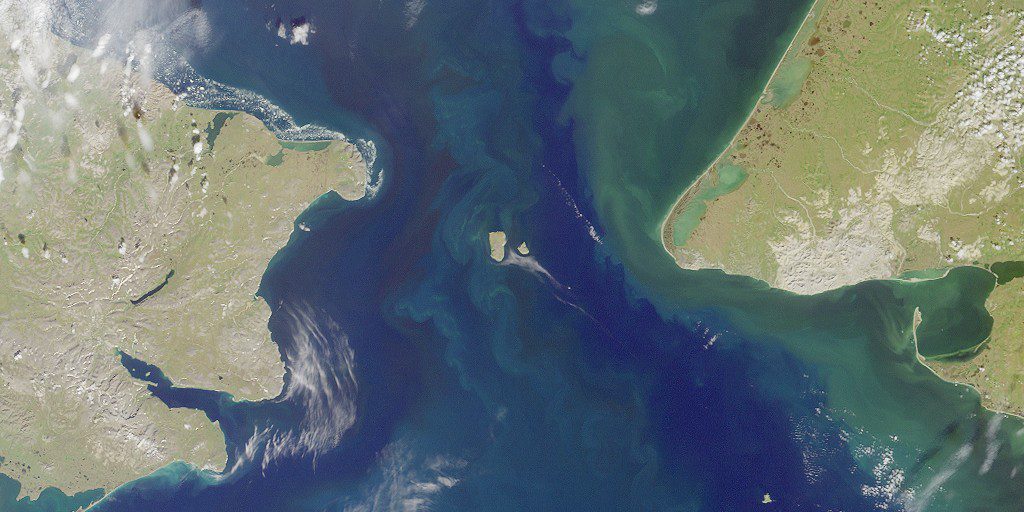Declining sea ice coverage in recent years has made the Northwest Passage and the Bering Strait more attractive options for international shipping. With increased vessel traffic comes a corresponding need for increased traffic regulation. Since 2018, the U.S. Coast Guard has been running a Port Access Route Study, or PARS, for the Chukchi and Beaufort Seas to determine how vessel traffic in the region should be routed.
The study is currently in its public comment period, but that period will close on March 31. Verner Wilson, senior oceans campaigner for the environmental nonprofit Friends of the Earth, encouraged community members to submit comments.
“This is an opportunity for the public to weigh in, provide any sort of knowledge that you might have about important areas where you go hunting or where you might see walrus haulouts or whales,” Wilson said.
The Coast Guard is also looking for information on prevailing winds and currents or other conditions that could affect navigation.
This isn’t the first time the Coast Guard has conducted a PARS in waters off the coast of Western Alaska.
“We’ve already seen the Coast Guard conduct a similar study in the Bering Sea, which resulted in three Areas to be Avoided, or ATBAs, around St. Lawrence Island, Nunivak Island and King Island,” Wilson said.
The Coast Guard established those Areas to be Avoided based largely on input from the community.
“They put a great deal of weight (on community input). They wanted to listen to tribal leaders — it’s their trust responsibility, as a U.S. agency, to listen to the federally recognized tribes. They wanted to listen to elders, they wanted to listen to whaling captains,” Wilson said.
The previous PARS looked at the Bering Sea south of the Strait; the current study is focused further north.
David Seris works for the Waterways Management Branch of the 17th Coast Guard District, which serves the Alaska coast. The Coast Guard has already rejected one routing proposal due to comments submitted earlier in the process, Seris said.
“We threw out an initial proposal that had a route about 50 miles offshore — we’ve gotten some comments that that might need to be further offshore,” Seris said.
In addition to public comments, the Coast Guard will examine current vessel traffic patterns based on navigational data from ships currently operating in the Beaufort Sea and the U.S. side of the Chukchi Sea.
“There’s not a whole lot of traffic in the Arctic, so you don’t have real discernible shipping patterns, but we’re going to take a look at that,” Seris said.
Once the Coast Guard puts together a proposal, there will be another public comment period before the 17th Coast Guard District submits a final recommendation to Coast Guard headquarters in Washington, D.C., according to Seris.
Once that happens, the Coast Guard will forward the recommendation to the International Maritime Organization, the United Nations agency that regulates international shipping. It will likely be at least a couple of years before any regulations are in place, Seris said. By comparison, the previous PARS in the Bering Sea started in 2010, but the resulting regulations didn’t go into effect until late 2018.
To submit a public comment, visit Regulations.gov.
Image at top: The Bering Strait as seen from space. Photo courtesy of the National Aeronautics and Space Administration.




